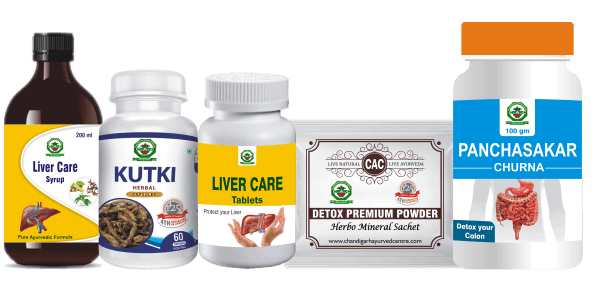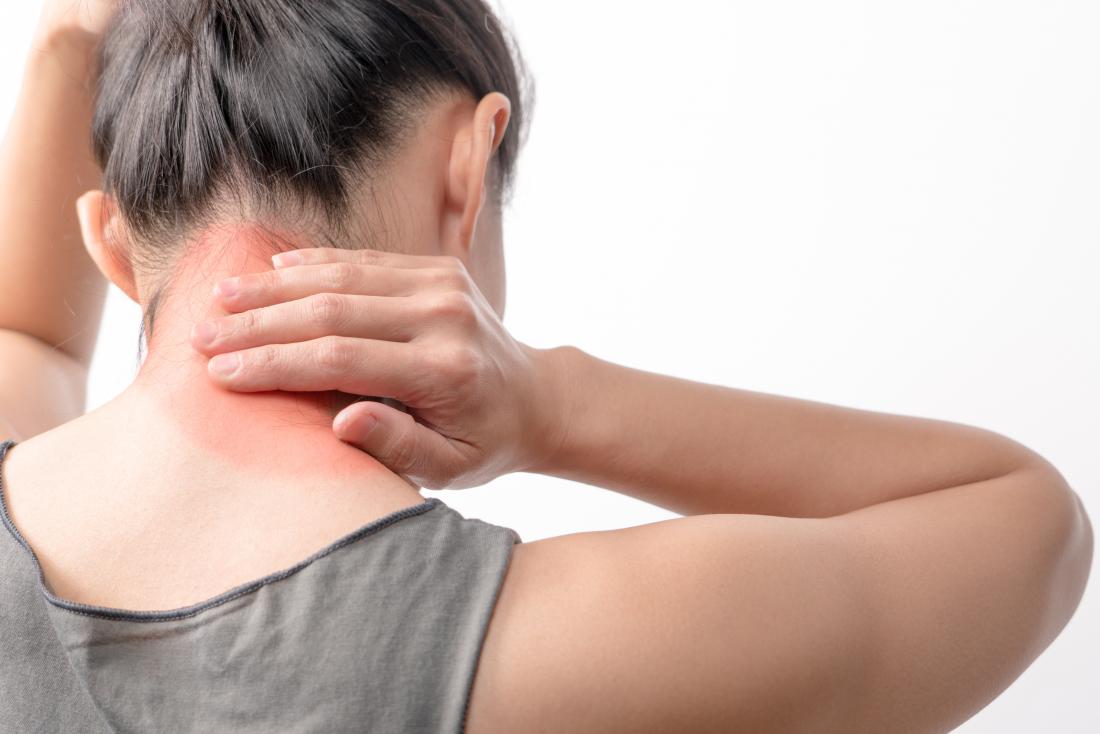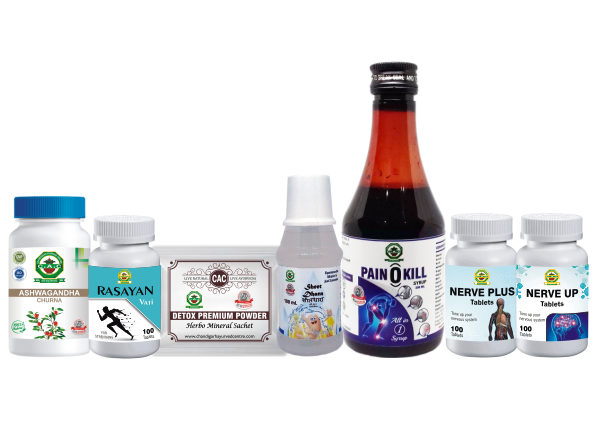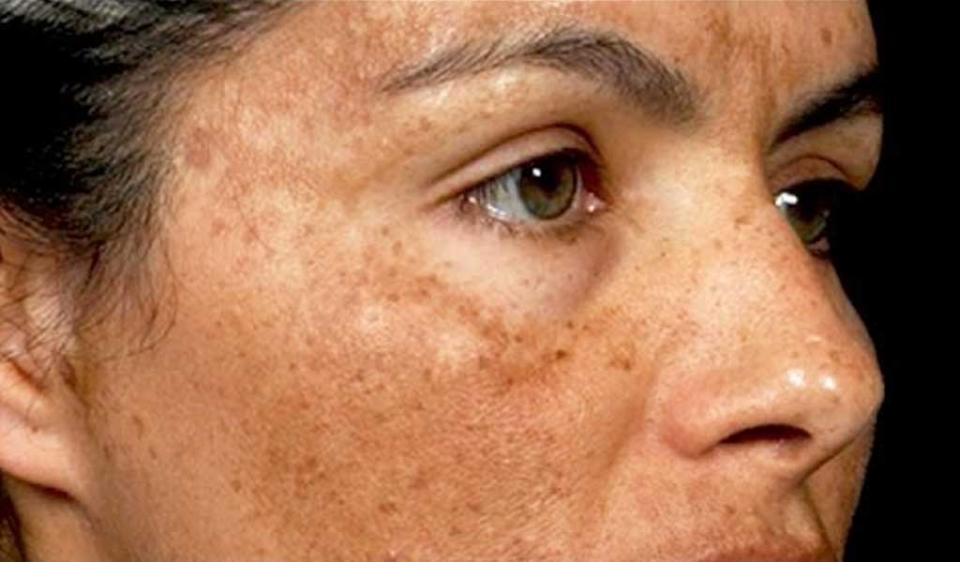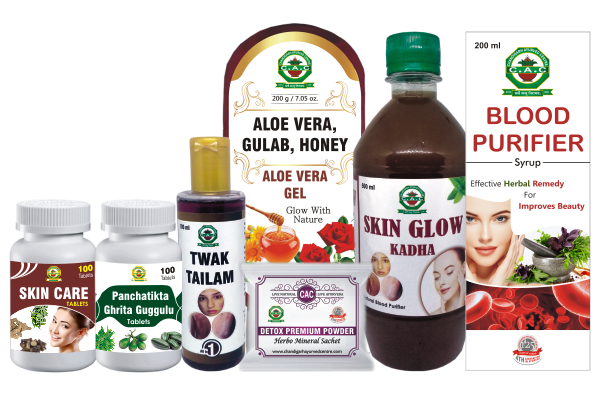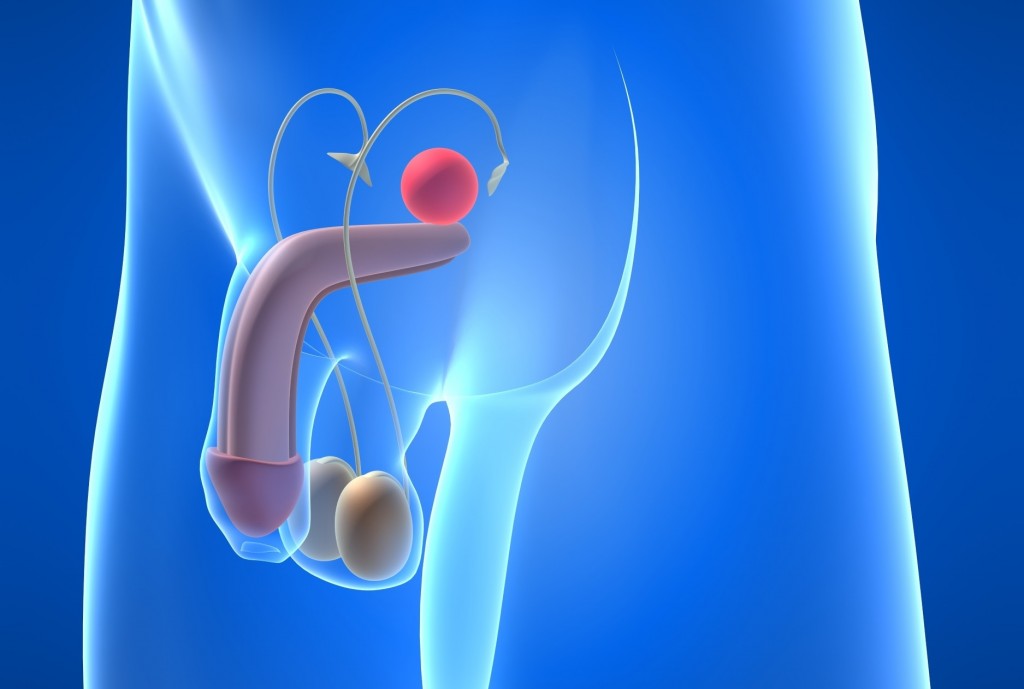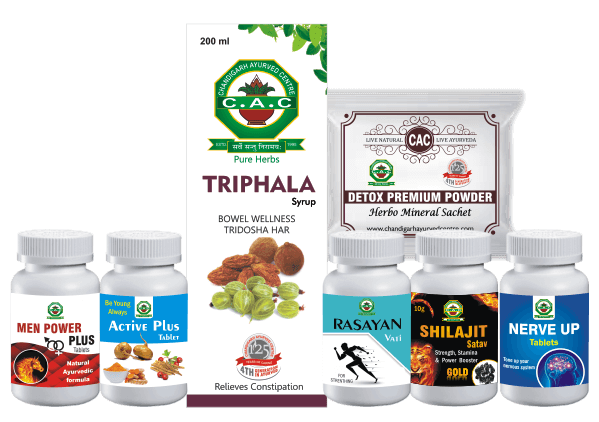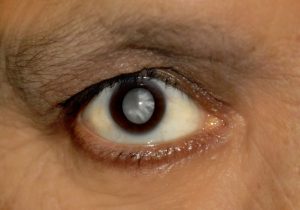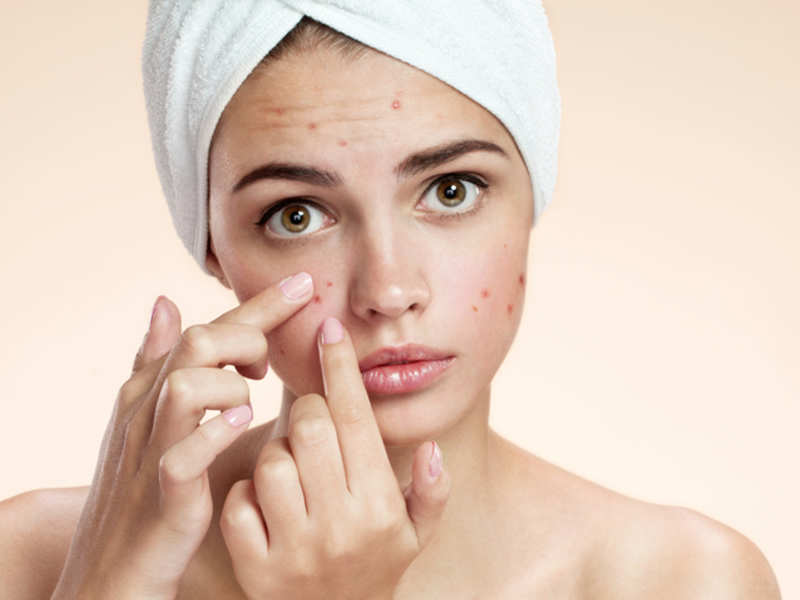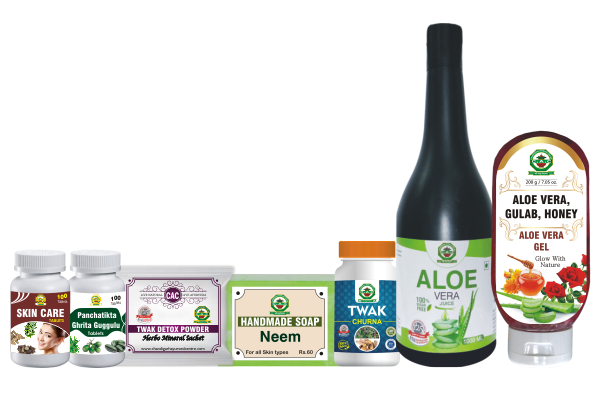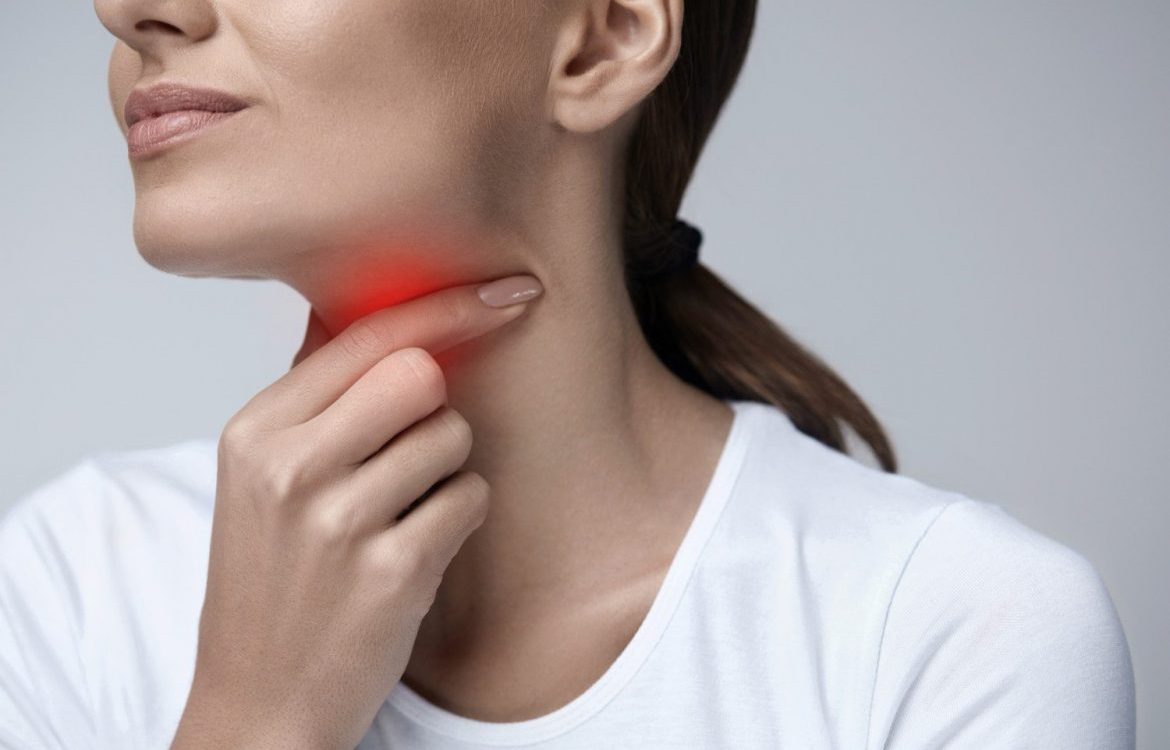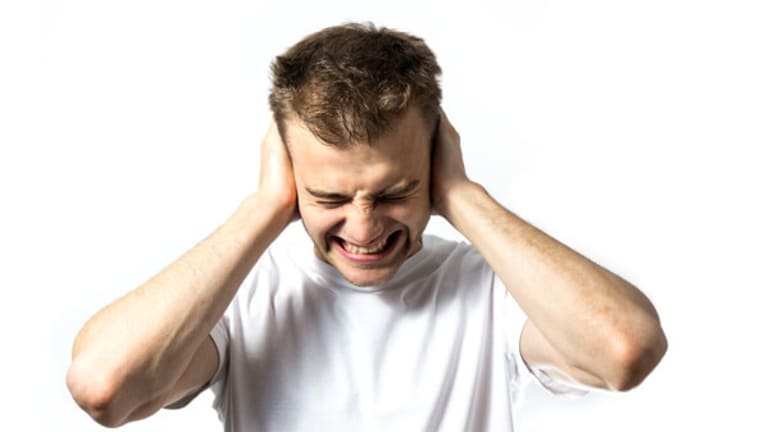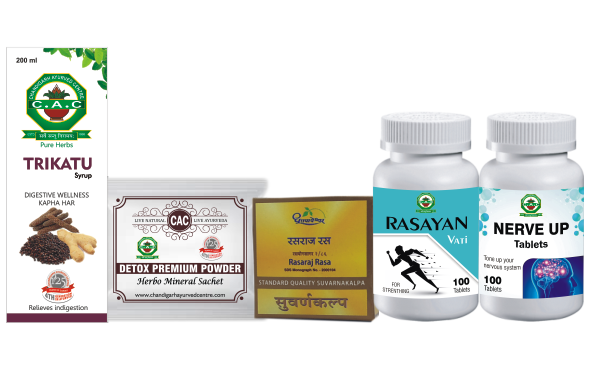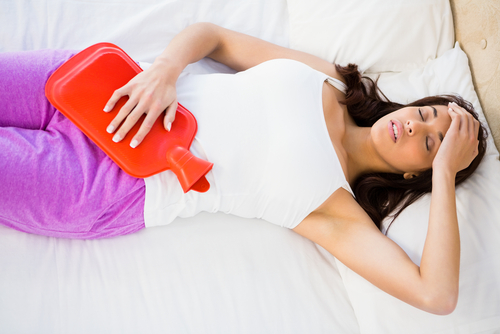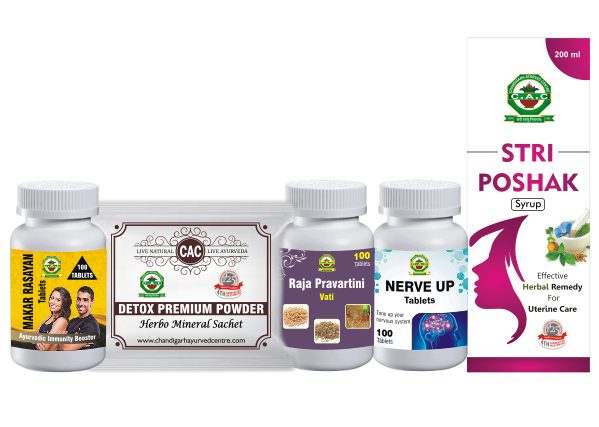Author Archives: Dr. Vaidya Karanvir Singh
Liver Cirrhosis
- October 14, 2019
- Posted by Dr. Vaidya Karanvir Singh
- 0 Comment(s)
The Liver is the heaviest internal organ in the human body. It is a reddish-brown organ that weighs about 1.5kg. This organ helps in detoxification, synthesizes proteins, & helps in emulsification of lipids. It is considered as a digestive gland that produces bile and helps in the breakdown of fats. There is different type of diseases associated with liver one among them is liver cirrhosis. Most of the people didn’t have exact knowledge of this disease.
In liver cirrhosis, the healthy cells of the liver are replaced with scar tissue that slows down the production of protein & other substances. This disease is progressive that develops slowly & at the end stop its proper functioning. The Advance stage of liver cirrhosis is a life-threatening condition. So always try to take proper treatment at a time.
What are the signs & symptoms of Liver Cirrhosis?
Most often there are no signs & symptoms of Liver Cirrhosis seen in patient until the liver get fully damaged. The signs & symptoms that are seen are:
- Fatigue
- Loss of appetite
- Nausea
- Weight loss
- Nausea
- Weakness
- Tenderness & pain near the liver
- Heartbeat accelerated
- Dizziness
- Confusion
- Edema on ankles, feet, & legs
- Jaundice
- Hair loss
- Muscular cramps
- Fever
- Increased infection
- Nasal bleeding
- Pain in the right shoulder
- Breathlessness
- Dark urine
- Vomiting with blood
- Insomnia
- Itching in skin
- Ascites (Accumulation of fluid in the abdomen)
- The blood vessels of your skin are easily prominent
- While walking patient feel a disturbance
- Stools appear pale in color
- Loss of sex drive
What are the causes of Liver Cirrhosis?
There are different causes for the occurrence of liver cirrhosis mentioned below:
- Excessive consumption of alcohol
- Viral hepatitis like (B, C & D)
- Excessive accumulation of fats named as nonalcoholic fatty liver disease
- Hemochromatosis
- Wilson’s disease (accumulation of copper in the liver)
- Biliary atresia in which bile ducts are formed poorly
- Cystic fibrosis
- Splenomegaly
- Hepatomegaly
- Autoimmune hepatitis that is caused due to the body’s immune system
- Scarring & hardening of bile duct known as primary sclerosing cholangitis
- Most of the infections like brucellosis or syphilis
- Certain medications like isoniazid or methotrexate
What is the ayurvedic view of liver cirrhosis?
According to Ayurved Yakrit is known as liver & the cirrhosis of liver is correlated with “kumbh kamla”. In this disease all three doshas (Vata, Pitta, & Kapha) are imbalanced. Pitta is the most aggravated dosha so pacifying & purification therapies are done.
What is the ayurvedic treatment of liver cirrhosis?
In Ayurved, there are different herbs that will treat the scar tissues & maintain healthy liver cells. The ayurvedic medicines for the liver cirrhosis will deal with the signs & symptoms of liver cirrhosis, balances dosha in the body, & increase the life-span of liver. Chandigarh Ayurved centre introduces a kit known as liver cirrhosis care kit that contains a combination of herbal medicines. This kit contains ayurvedic products that are mentioned below in detail:
Real Testimonial of Liver Cirrhosis
ALL PRODUCTS DESCRIPTION IN DETAIL:
1. Kutki Capsule
These herbal capsules are prepared from the standardized extract of Picrorhiza kurroa. The herb used in this capsule show anti-inflammatory and antioxidant properties. These properties help in treating liver cirrhosis naturally.
Recommended Dosage: Take two capsules twice a day with normal water.
2. Detox Premium Powder
This is a herbo-mineral preparation that contains following ingredients: Moti pishti, Parwal pishti, Shukta pishti, Giloy satav, Kamdudha ras, Jahar Mohra pishti, Akik pishti, Gandhak rasayan, Tal sindoor, Shankh bhasam, Sutshekhar ras, Sudhyog tab, Shwet parpati, Yavakshaar. Premium detox powder keeps your liver cell healthy. It clears away the toxins from the body and stimulates the function of the liver and increases the flow of bile
Recommended Dosage: Take one sachet twice a day with normal water.
3. Liver Care Syrup
It is a herbo-mineral Syrup which is purely ayurvedic formulation. CAC Liver Care syrup helps in balancing Pitta dosha. This Syrup enhances regeneration of liver cells, promote functions of liver, and improve blood flow from the liver. It helps in the treatment of fatty liver, Liver cirrhosis, Hepatitis, hepatomegaly, and obstructive Jaundice. CAC Liver Care syrup contains Ingredients like Kalmegh (Andrographis paniculata), Kutaki(Picrorhiza kurroa), Bhumi amla( phyllanthus niruri), Giloy(Tinopora Cordifolia), Yavakshar( Hordeum vulgare), Imli Kshar( Tamarindus indica), Mukta Shukta pisti etc. These herbs show Antioxidant, anti-inflammatory, Hepato-protective, properties. This syrup improves digestion, enhances appetite.
It shows results in Fatty Liver, Liver Cirrhosis, Hepatitis A, Hepatitis B, Hepatitis C, Liver Cancer, Hepatomegaly, Inherited diseases- Hemochromatosis and Wilson’s disease, and Jaundice.
DOSAGE– Take 2 tablespoon twice daily
4. Liver Care Tablet
It is a herbo-mineral tablet of size 650 MG and is a purely ayurvedic formulation. CAC Liver Care tablets help in balancing Pitta dosha. These tablets stimulate the growth of new liver cells, promote functions of liver, and improve blood flow from the liver. It helps in the treatment of fatty liver, Liver cirrhosis, Hepatitis, hepatomegaly, and obstructive Jaundice. CAC Liver Care Tablets contains Ingredients like Kalmegh (Andrographis paniculata), Kutaki(Picrorhiza kurroa), Bhumi amla( phyllanthus niruri), Giloy(Tinopora Cordifolia), Yavakshar( Hordeum vulgare), Imli Kshar( Tamarindus indica), Mukta Shukta pisti etc. it shows results in Hepatomegaly, Inherited diseases- Hemochromatosis and Wilson’s disease, Jaundice and Obstructive jaundice
DOSAGE: Take one tablet twice a day with normal water.
5. Panchsakar Churna
It is a herbo mineral and purely ayurvedic formulation. It mainly works on your Vata and pitta dosha of your body. It can cure Chronic Constipation and help relieve symptoms of Acidity, indigestion, Belching and colic pain. It acts as a mild Laxative and reduces Bloating. It works very efficiently on a disease named IBS (Irritable bowel syndrome) which is very common nowadays that affects your day to day activities. CAC Panchsakar churna is 100% natural and pure. It is prepared from various herbs like Haritaki, Shunthi, Swaran Patri, Shatapushpa, and Saindhav Lavan that show antioxidant, anti-inflammatory and laxative properties.PANCHSAKAR CHURNA contains Haritaki (Terminalia Chebula), Shunthi (Zingiber Officinale), Saindhava Lavana (Rock Salt), Svarna Patri (Cassia Angustifolia), Shatapushpa (Foeniculum Vulgare)
DOSAGE: Take one tablespoon at night with normal water.
What is the panchakarma treatment for liver cirrhosis?
Panchakarma is a way that helps in the detoxification of the liver. It balances all three doshas (Vata, Pitta, Kapha) in the body. As in liver cirrhosis basically the pitta dosha is imbalanced so firstly it is been balanced. Panchkarma treatment is not required in this disease only medicines are sufficient; the ayurvedic medicines mentioned above are beneficial for liver cirrhosis patients.
Healthy tips & diet for liver cirrhosis patients:
- Include in your diet green vegetables such as bottle gourd, ridge gourd, bitter gourd, cauliflower, cabbage, kale, fenugreek, coriander, pumpkin, etc.
- Drink limited amount of water & can drink one green coconut water.
- Also include vegetables like carrot, turnip, beetroot, radish, etc.
- Eat fresh fruits like berries, apple, pear, peach, orange, papaya, guava, etc.
- Daily walk for 30 minutes to keep you fit.
- Avoid milk & dairy products.
- Totally avoid fried, fast, & processed food items.
- Do perform yoga poses & pranayam such as kapalbhati pranayam, dhanurasana, ardh mastsyendrasana, naukasana, Gomukhasana, etc.
Fibromyalgia
- October 14, 2019
- Posted by Dr. Vaidya Karanvir Singh
- 0 Comment(s)
I wake up tired, I stay up tired, I wake up in pain, I stay up in pain, I wake up with hope, I stay up with hope but still I’m fed up, these all a fibromyalgia patient feel in daily routine. Most of the people don’t have knowledge about fibromyalgia. It is a chronic disorder widespread with musculoskeletal pain that targets the soft tissues and muscles in the body. Fibromyalgia is also known as fibrositis. It is a chronic condition that causes stiffness, pain, tenderness of tendons, joints, & muscles. This condition occurs independently with other diseases like rheumatoid arthritis, systemic lupus, etc.
It is seen that fibromyalgia is more common in women than in men. This disorder mostly takes place between the ages of 35 and 55.
WHAT ARE THE SIGNS & SYMPTOMS OF FIBROMYALGIA?
The signs and symptoms seen in fibromyalgia patient are:
– Pain and tenderness in muscles
– Widespread pain
– Joints stiffness
– Headache
– Irritable bowel syndrome
– Tingling sensation in hands and feet
– Numbness
– Excessive pain during menses
– Fatigue
– Depression
– Insomnia
– Nausea
– Urinary problems
– Anxiety
– Breathing issues
– Skin diseases
– Breathing issues
– Non-rapid eye movement
– Mood swings
WHAT ARE THE CAUSES OF FIBROMYALGIA?
The causes of Fibromyalgia involve many factors such as various illnesses that aggravate fibromyalgia, genetic factors (run in families), psychological stress, & physical trauma. As per Ayurveda the accumulation of Ama (toxins), poor nourishment and digestion lead to fibromyalgia.
WHAT IS THE AYURVEDIC TREATMENT OF FIBROMYALGIA?
In Ayurveda fibromyalgia is a disease that comes under vatavyadhi. The aggravation of vata dosha along with the accumulation Ama (toxins) gives rise to Fibromyalgia. The vata and kapha dosha is the main culprit in this disorder. In Ayurveda, there are numerous herbs present in nature that will deal with stiffness, fatigue, pain, mental disturbance, & loss of movement related to Fibromyalgia patients. Chandigarh Ayurved Centre provides the best ayurvedic treatment for Fibromyalgi known as Fibromyalgia Relief Kit that contains a combination of herbal products. These products will give effective results to the patient.
ALL PRODUCTS DESCRIPTION IN DETAIL:
DETAIL DESCRIPTION OF ALL PRODUCTS:
1. Detox premium powder:
This is a herbo-mineral preparation that contains ingredients like Parwal Pishti, Giloy satv, Shukta Pishti, Kamdudha Ras, Gandhak Rasayan, etc.
Parwal Shukti – Parwal Shukti is very beneficial in the condition of headache, depression, temporomandibular joint disorder, tensions, irritable bowel syndrome etc. It also reduces the stiffness and boosts the immune system.
Shukta Pishti: It helps to balance the Pitta dosha in the body. All signs and symptoms related to Psoriasis patients are managed with this pishti.
Giloy Satva: Giloy satva helps in detoxification of body that removes all the toxins. It is best anti-inflammatory and blood purifier. This satva act as a strong antacid that deals with hyperacidity and all the gastric problems.
Kamdudha Ras: This herbal-mineral classical preparation balances Pitta dosha in the body.
Gandhak Rasayana: This herbal preparation is used since ancient times for all types of skin disorders.
Tal Sindoor: It contains ingredients like Shuddh parad, Aloe vera, Gandhak, etc that relieve redness in psoriasis patients.
Akik Pishti: It act as a Cardiac tonic reduces the stress and improve the health. Also helps in reducing the inflammation by acting on body mechanism. Akik is also beneficial for preventing the acidity and neutralize the oxidant effect of free radicals and other substances.
Yavakshara: It gives best result in chronic pain, nausea, muscle spasm, and nerve pain. Yavakshara also influences the areas of the brain associated with memory and co-ordination. Regular use of this sachet will help to improve the mental health.
Jahar Mohar : Jahar mohar is frequently used for managing the high blood pressure. It has different properties like, Antidiarrheal, Antiemetic, Antacid, and Digestive stimulant.
Recommended Dosage–Take 1 sachet twice a day with normal water.
2. Pain – O – Kill Syrup:
It is an Herbal Remedy which helps to get relief from severe pain which is associated with Fibromyalgia. This syrup includes ingredient like Hadjod Stem, Ashwagandha root, Shallaki gum, Punarnava root, Methi seeds, etc that reduces inflammation & stiffness. It helps in rejuvenating the body tissues, improves muscle tone, reduces inflammation, relieves stress, anxiety, pain, swelling, inflammation, etc.
Recommended Dosage – Take 2 teaspoonful twice daily with normal water.
3. Ashwaganda Churna:
This herbal churna is prepared from pure extract of the herb Ashwagandha (Withania somnifera) that is good for fibromyalgia patients. The churna strengthens the muscle, increases energy levels, strength, etc. It reduces the inflammation, stiffness, & pain in the body. All symptoms in fibromyalgia patients are treated with this churna.
Recommended Dosage–Take 1 teaspoonful twice daily with normal water.
4. Sheet Dhara Syrup:
This herbal syrup is prepared from Peppermint, Ajwain satv, etc that balances vata & pitta dosha in body. Fibromyalgia is mainly due to aggravation or imbalance in the Vata Dosha. When Vata Dosha aggravate it causes – muscle tenderness, muscle spasm, sensation of coldness, joint stiffness, headache, painful menstruation, gastrointestinal disorders like; constipation, nausea or passing excessive amount of gas.Sheet dhara syrup is best remedy to balance the vata. Once the dosha maintain it balances, all the symptoms related to fibromyalgia. This syrup helps to relieve blenching, bloating, discomfort in the stomach, etc.
Recommended Dosage – Mix 1 teaspoon in 30 ml of water and drink early in the morning on empty stomach.
5. Nerve up tablet:
Nerve up tablets help in balancing the vata dosha and reduces kapha dosha, and acts as nervine stimulant. It shows effective results in improving the central nervous system. It contains natural ingredients like shudha kuchala, shudha shilajeet, abhrak bhasma, praval pishti, shankh bhasma etc. This tablet helps in the symptoms related to Allergy, ankylosis spondylitis, provide relief from muscle pain.
Recommended Dosage – Take 1 tablet twice daily.
6. Nerve Plus tablet:
These tablets shows Anti-bacterial, Anti-inflammatory, Antioxidant, and immune-modulator properties. It contains herbal ingredients Ghritkumari (Aloe barbadensis), Kali mirch (Piper nigrum), Giloy satav (Tinospora crdifolia), shudha kuchala, shudha shilajeet, shudha vatsnabh, shudh singraf. It is beneficial for diseases of stomach, stimulating nerves and appetite, promotes the level of testosterone naturally.
Recommended Dosage – Take 1 tablet twice daily.
7. Rasayan Vati:
Rasayan vati is herbo-mineral Ayurvedic formulation which contains various herbs such as Aswagandha, Shilajeet, Amla, Kesar, Musali, Shatavar, Brahmi Abhrak Bhasam, Swarn Makshik Bhasam, Yashad Bhasam, Mukta pisti, Praval pisti, Jaiphal, Vang Bhasam, Aswagandha, Dalchini, Javitri, Gokhru, Kaunch Beej, Shilajeet, Saunth, Mirch, Pipli, Amla, Kesar, Manjith, Anant Mool, Brahmi, Musali, Shatavar, Swarn Vang, etc. These ingredients show antioxidant, anti-inflammatory, antipyretic, analgesic, immune-modulator properties. These tablets provides good results in General debility, Psychological disorders, and improves immunity.
Recommended Dosage – Take 1 tablet twice daily.
WHAT IS THE PANCHAKARMA TREATMENT OF FIBROMYALGIA?
Panchakarma provides very effective results to the patients along with the ayurvedic medicines for Fibromyalgi mentioned above. Chandigarh Ayurved Centre provides various panchakarma procedures that will relieve all signs and symptoms of fibromyalgia patients. These procedures are mentioned below in detail:
1) Patra potli pind sweda (PPS): In this procedure, a bag is wrapped with herbal leaves. Dip in medicated oil. After that massage is done on your whole body with this potali.
2) Shashti Shali Pind Sweda (SSPS): This procedure is done with the shashti shali rice. In this, a bag is wrapped with shashti shali and cooked in herbal oil. After that, the massage is done with this potali on your whole body that will reduce stiffness, pain, & inflammation in fibromyalgia patients.
3) Nasya: In this procedure, medicated oil is poured in each nostril. This medicated oil will balance the vata and kapha dosha in the body that is the reason for fibromyalgia.
4) Shirodhara: Lukewarm medicated oil is poured on your forehead for calming your mind. This procedure will reduce stress, anxiety, fatigue, general weakness related in fibromyalgia.
5) Virechan: If the condition of the patient is better than Virechan is recommended. In this procedure, all toxins are removed from the body.
HEALTHY TIPS & DIET FOR FIBROMYALGIA PATIENTS:
– Drink green coconut water daily.
– Include soups and vegetable juices in your daily routine.
– Avoid tea, coffee, yogurt, alcohol.
– You can prepare an herbal tea from ginger, clove, cardamom, & cinnamon. Drink this herbal tea once daily.
– Avoid vegetables like cabbage, cauliflower, broccoli, Brussels sprouts, potatoes, etc.
– Do perform exercises or walk for 30 minutes daily.
– Drink carrot and beetroot juice.
– Do practice yoga poses like uttanasana, bhujangasana, setu bandha sarvangasana, & sooryanamaskar for strengthening your muscles.
– Perform Anuloma-viloma Pranayam & shavasana.
– Take a sound sleep of 8 hours at night time.
– Avoid eating fast and processed food items.
Blemishes
- October 14, 2019
- Posted by Dr. Vaidya Karanvir Singh
- 0 Comment(s)
Blemish is a type of mark, spot, discoloration, or flaw that appears on the skin that may disturb the person’s life emotionally. People who have fair skin and who tend to blush easily might be at a higher risk of having blemishes regularly. The condition appears more often among women, but men tend to have more severe symptoms.
In the modern world, every individual is facing one of the types of skin problems, most common of them are blemishes. It is the result of an increase in environmental pollution and our wrong eating habits. It was noticed that 70-95% of adolescents are affected to some degree of blemished skin.
What are the Causes for Blemishes?
The most common causes of blemishes can easily occur are –
– Excessive sun exposure
– Certain medications
– Clogged pores
– Genetics
– Highly spicy, oily, fried foods
– Fungal infections
– Certain viruses, such as HSV-1
What are the Signs and Symptoms of Blemishes?
The symptoms of blemishes are varying person to person skin, it depends upon the person’s lifestyle, dietary habits, etc. But the most common symptoms that every person has to suffer are –
– Formation of small multiple papules
– Redness on the nose, chin, foreheads
– Flushing (face become red & hot)
– Hyperpigmentation
– Cold sores
– Scar formation
What is the Ayurvedic View for Blemishes?
According to Ayurveda, any disturbance in the Tridosha (vata, pitta, & kapha) results in the disease formation. Out of three, Pitta Dosha is responsible for maintaining the digestive system, and when there is any disturbance in the fire or Agni, it will lead to several symptoms. Bhrajak Pitta, sub-type of Pitta Dosha helps in maintaining the health of skin, and hence when it gets aggravated, many skin problems are arising leading to swelling, redness, pigmentation, scar formation, the formation of pustules, etc.
What is the Ayurvedic Treatment for Blemishes?
Nowadays, due to an increase in environmental pollution, every individual is suffering from various skin problems. Thus, they used a variety of skin products that provide temporary relief but later on, it causes dryness, skin irritation, flaking, etc. Instead of using modern cosmetics, a person should use natural products once that is safe and free from side effects. Ayurveda has numerous herbs that are proven best and safe for the skin. In Ancient times, neem, aloe vera, chandan,manjistha, etc. are used to maintaining the health, luster, glowing, and complexion of the skin.
Chandigarh Ayurved Centre offers the best and natural way to cure blemishes. We made a medicinal kit named – ‘Blemishes Go kit’ that includes a total of 5 products – Detox premium powder, Skin glow kadha, Blood purifier, Aloe vera gel, Twak tailam, Skin Care tablet & Panchatikta ghrita guggulu. The medicines are herbal and can be used by any age of a person.
ALL PRODUCTS DESCRIPTION IN DETAIL:
1. Detox Premium Powder:
Detox premium powder is a very effective ayurvedic medicine to cure blemishes as it purifies the whole body by removing excess toxins from the body. The powder is composed of shukta pishti, giloy satv, gandhak rasayan, moti pishti, akik pishti, shankh bhasma, etc. The ingredient reduces all the signs and symptoms associated with the blemishes.
Recommended Dosage – Take 1 sachet twice daily with normal water.
2. Skin Glow Kadha:
Skin glow kadha is an Ayurvedic proprietary that gives the best result in the treatment of acne, blemishes, rashes, and other common skin problems. The decoction is composed of dalchini, giloy, tulsi, chirata, haldi, mahaguni, bahera, etc. The ingredients have anti-aging properties and act as natural astringent that provides freshness to the skin, helps in improving the skin texture, restores the skin balance and naturally improves the quality of the skin.
Recommended Dosage – Take 20 ml twice daily with an equal amount of water.
3. Blood Purifier Syrup:
It is ayurvedic syrup that consists of various natural ingredients such as Khadir Chall (Acacia catechu), Manjistha (Rubia cordifolia), Neem (Azadirachta indica), Giloy (Tinospora cordifolia), Harad (Terminalia bellirica), Baheda (Terminalia chebula), Amla (Emblica officinalis), etc. As
the syrup purifies the blood by removing excess toxins it is very beneficial in maintaining proper circulation and improves the skin naturally.
Recommended Dosage – Take 2 teaspoonful twice daily.
4. Aloe Vera Gel:
Aloe Vera herb is well known for its medicinal properties and has multiple benefits in case of skin problems. The gel is made up of pure extract of aloe vera that has a mixture of rose petals in it. The gel has anti-inflammatory, anti-oxidant, anti-fungal, anti-bacterial properties and also provides a
coolant effect to the skin.
Method of Application – Gently apply over the affected area of the skin.
5. Twak Tailam:
Twak tailam is very effective for the skin as it deeply nourishes the tissues and improves the skin luster. The tailam is composed of yashtimadhu (Glycyrrhiza glabra), manjistha (Rubia cordifolia), etc. The tailam supports skin health, helps in reducing uneven pigments, improves complexion, and helps in deep detoxification and blood purification without any side effects.
Method of Application – Apply over the affected area of the skin.
6. Skin care tablet:
Skin care tablet is a pure ayurvedic formulation. It help to maintain the texture of your skin depending on the type of skin you have. It contains various herbs like Haridra khand, Panchnimb churna, Khadir chahal, Chirayta, Mulethi, Chopchini, Gandhak, Ajmoda that work very effectively on all
skin types. Skin care is a blood purifying tablet. It cools and detoxifies the blood, increase blood circulation of the skin. It minimizes the blemishes, lighten sun tan, delay ageing of skin and heal skin problems.
Recommended Dosage: Take 1 tablet twice daily.
7. Panchatikta ghrita guggulu:
This tablet contains pure herbal ingredients such as Nimba(Azadirachta indica), Patola(Cucumis acutangulus), Guduchi(Tinospora cordifolia), Vasa(Adhatoda vasica), etc. these herbs shows Antioxidant, Anti-rheumatic, Anti-inflammatory, Analgesic, antipruritic, neuro-protective
properties. This tablet is effective in Indigestion, blood purification, blemishes, scars, asthma, and gout.
Recommended Dosage: Take 1 tablet twice daily.
What is the Panchakarma Treatment for Blemishes?
The main function of Panchakarma is to detoxify the body by removing the excess amounts of toxins from the whole body. In the case of blemishes, Chandigarh Ayurved Centre offers the two therapies that are mainly made for glowing, charming skin naturally. The therapies are done by experienced therapists with proper guidance.
Mukha Lepam– It is a medicated paste prepared from herbs that keeps your facial skin healthy. The herbs are generally Pitta and Kapha pacifier that reduces all symptoms of blemishes and provides a glowing and healthy skin.
Fruit Mukha Lepam– In this therapy various fresh fruits are mixed to form a paste and by adding aloe vera gel and some of the best herbs, a paste is applied to the skin. After drying, it is removed gently and a small amount of aloe vera gel is applying for the moisturization of the skin. This therapy is very beneficial in reducing pigmentation, scars, redness, etc.
Healthy Diet and Lifestyle –
– Skin cells require water to function properly. According to research, a blemish is more likely to develop when your system has more toxins. By drinking more water it helps to eliminate the toxins from the body and provide healthy skin.
– Exercise boosts blood circulation and promotes sweating, which helps the body to push impurities out of the pores. Physical activity helps in reducing stress levels, which in turn aids the prevention of blemishes.
– Reduce the intake or strictly avoid the oily, fried, sour, salty foods, as it aggravates the pitta dosha and results in the formation of toxins in the body which make the symptoms severe and worse.
– Wash your hands once you wake up before touching the face and do not sleep without washing your face.
– The less you sleep the higher your cortisol level will be. Poor sleep causes dehydration, the appearance of your skin with dark circles and puffy eyes. Get adequate sleep to manage the symptoms of blemishes.
Azoospermia
- October 14, 2019
- Posted by Dr. Vaidya Karanvir Singh
- 0 Comment(s)
What is Azoospermia?
Azoospermia is a condition when there is an absence of sperm in males. In this situation, there is no sperm found in the fluid on a routine analysis of semen. It is usually an unpleasant surprise for males, which leads to infertility. This condition is seen in 1% of all males & 15% of infertile males.
What are the Signs & Symptoms of Azoospermia?
The different signs & symptoms associated with Azoospermia patients are mentioned below in detail:-
- Presence of little or no semen
- Pain while passing urine
- Pain in the pelvic region
- Abnormal puberty
- Difficulty with ejaculation
- Low sex drive
- Testicles are smaller than lower
- Abnormal puberty
- Reduced male hair growth
- Muscle loss
- Enlarged breasts
- Swelling, pain, & lump in the testicle area
- Chromosome or hormone abnormality
What are the Two Types of Azoospermia & its Causes?
Azoospermia is divided into two categories:
1) Obstructive Azoospermia:
In obstructive azoospermia, sperms are produced inside the testicles. Obstruction or blockage is seen in the reproductive tubing that prevents the sperm to flow outside the world. The causes of obstructive azoospermia can be congenital, genetic, or acquired.
Other causes are:-
- Vasectomy is a surgical procedure that interrupts the sperm ducts to stop the flow of sperm.
- Congenital conditions: In this situation, some men are born with missing vas deferens other men are born with a cyst in the prostate that creates a blockage in ejaculatory ducts.
- Infections: In this condition, infections of the testicles, prostate, or reproductive tract like epididymitis, prostatitis, orchitis, & venereal diseases like chlamydia take place. It can cause a blockage of the ejaculatory duct or small tubules of the epididymis.
- Surgical complications: The procedures that are performed during surgery on the urogenital organs or hernia repair cause scarring that results in blockage.
2) Non-Obstructive Azoospermia:
Non-obstructive Azoospermia is a condition, in which the tubes are open, there is no production or low level of sperm production. This level is too much low that the sperm is not able to make the way out of the testicle.
The causes of non-obstructive azoospermia is abnormalities with the reproductive hormones or the testicles that control the production of sperm. It can be congenital, genetic, or acquired.
- Genetic causes: The most common chromosomal problem that causes azoospermia in male is when there is an extra X chromosome (Klinefelter Syndrome). Another causes of azoospermia is deletion of Y-chromosome that is responsible for male characteristics. When one or more genes are deleted in the chromosomes it results in azoospermia. Most of the genetic issues produce small amounts of sperm within the testicles.
- Hypospermatogenesis: This situation is found through routine semen analysis in which sperm production within the testicle are just at lower amounts than normal.
- Varicocele: It is characterized by varicose veins around the testicle that causes male infertility.
- Maturation arrest: It can occur at early or late stage of sperm maturation process.
- Testicular cancer: Testicular cancer or other tumors of the reproductive system is responsible for azoospermia or very low sperm counts.
What is the Ayurvedic Point of View on Azoospermia?
According to Ayurvedic point of view Azoospermia is correlated with Klaibya, Shanda, Napunsaka that indicates impotency. All three doshas (Vata, Pitta, & Kapha) are imbalanced in Azoospermia.
What is the Ayurvedic Treatment for Azoospermia?
In Ayurved, there is a proper treatment of Azoospermia that treats patient from the root cause. All the signs & symptoms related to azoospermia is treated with proper use of ayurvedic medicines. Chandigarh Ayurved Centre introduces a special kit that contain ayurvedic medicines in it. This kit is known as “Azoospermia Go Kit” that is composed of five medicines that are mentioned below in detail:
Ayurvedic Medicine for Azoospermia
All Products Description in Detail:
1) Detox Premium Powder:
Detox premium powder is a herbo-mineral preparation that contains parwal pishti, giloy satv, shukta pishti, tal sindoor, gandhak rasayan, moti pishti, etc. These ingredients in combination deal with the azoospermia condition & remove toxins out from the body. It will deal with the painful urination, pelvic pain, muscle loss, enlarged breasts, etc.
Recommended dosage: Take 1 sachet twice daily with normal water.
2) Triphala Syrup:
Triphala syrup is a pure herbal formula that contains ingredients such as Amalaki (Emblica officinalis), Haritaki (Terminalia chebula), & Bibhitaki (Terminalia bellirica). These ingredients in combination show antioxidant, anti-inflammatory, analgesic, & immuno-modulator properties. It is beneficial for dealing with the signs & symptoms related to azoospermia patients.
Recommended dosage: Take 2 teaspoonful twice daily.
3) Men Power Plus:
Mostly at one age men may suffer from low self-esteem and become negative. This also occurs because they are facing problems in their sexual life. There might be early ejaculation and erectile dysfunction. A feeling of inferiority also occurs and they feel hesitate to visit a doctor or discuss this problem. It also affects their relationship and leads to fighting, divorce, loss of self-confidence, the stress in their personal life.
Recommended Dosage: Take 1 tablet twice daily.
4) Nerve-Up tablet:
These tablets are pure ayurvedic formulation. Nerve up tablets help in balancing the vata doshas and kapha dosha. It acts as nervine stimulant. It shows effective results in improving the central nervous system. It contains natural ingredients like shudha kuchala, shudha shilajeet, abhrak bhasma, praval pishti, shankh bhasma etc. This tablet also helps in Azoospermia.
Recommended Dosage– Take 1 tablet twice daily.
5) Makar Rasayan:
It contains natural ingredients like shudha kuchla, guduchi satva, shudha shilajeet, abhrak bhasma, ras sindoor, moonga bhasma, shankh bhasma, praval pishti etc. These ingredients shows antioxidant, aphrodisiac, analgesic and immune modulator properties. It helps to rejuvenate body tissues and act as an immune modulator, Immunity booster, Improves vitality, improves the overall health of an individual, Act on Central Nervous System, Help reduces stress and anxiety.
Recommended Dosage – Take 1 tablet twice daily.
6) Shilajit Satva:
This is the Ayurvedic formulation of Shilajit satav. It is a potent Immunity Booster and acts as an antioxidant, possesses anti-inflammatory properties. It has a tremendous effect on Male Infertility, Anemia, Alzheimer disease, improves brain functions, Fatigue, various Tumors and Cysts like PCOD in females. Due to its anti-inflammatory properties it works on inflamed lymph nodes as well. It balances blood sugar, increases absorption of nutrients, helps in detoxification.
Recommended Dosage – 5 to 10 drops of Shilajit to be mixed in one glass of Luke warm milk.
7) Nerve Plus Tablet:
These tablets shows Anti-bacterial, Anti-inflammatory, Antioxidant, and immune- modulator properties. It contains herbal ingredients Ghritkumari (Aloe barbadensis), Kali mirch (Piper nigrum), Giloy satav (Tinospora crdifolia), shudha kuchala, shudha shilajeet, shudha vatsnabh, shudh singraf. It is beneficial for erectile dysfunction, diseases of stomach, stimulating nerves and appetite, promotes the level of testosterone naturally.
Recommended Dosage – Take 1 tablet twice daily.
Also Read:- Ayurvedic Remedies for Premature Ejaculation and Erectile Dysfunction
What is the Panchakarma treatment for Azoospermia?
The above ayurvedic medicines is sufficient for Azoospermia patients there is no need for panchakarma treatment. All medicines in Azoospermia Go Kit is beneficial, effective, & result-giving.
Healthy Tips & Lifestyle for Azoospermia
- Include green leafy vegetables & fruits in your diet.
- Drink plenty of water.
- Include nuts like almonds, walnuts, pistachios, raisins, figs, etc. in the diet.
- Perform exercises & walk daily for 30 minutes.
- Drink green coconut water & fresh juices in your diet.
Cataract
- October 8, 2019
- Posted by Dr. Vaidya Karanvir Singh
- 0 Comment(s)
Cataract is a dense, cloudy area that forms in the lens of the eye. The condition begins when proteins in the eye form clumps that prevent the lens from sending clear images to the retina. The main work of retina is converting the light that comes through the lens into signals and then sends the signals to the optic nerve, which carries them to the brain.
The condition develops slowly with regular exposure to causes and eventually interferes with your vision. Cataracts are common in older people and they have to suffer some of the symptoms like blurry vision, increased sensitivity to glare, double vision in the affected eye, etc. The persons who are at high risk of having cataracts are – people who use long term use of steroids and other medications, who intake high consumption of alcohol, smoking, regular exposure to ultraviolet rays, who had done radiation therapy, trauma, etc.
To prevent cataract and to reduce the symptoms, we described some of the best home remedies that are proven to ease the symptoms and improves the vision. The home remedies are easy to use and are safe for every individual.
1) Ashwagandha
Ashwagandha is well-known to treat and even eliminate various diseases, including cataracts. This is due to its nutrient-dense nature and antioxidants present in it. It was proven that taking ashwagandha root powder extract can slow the advance stage of cataract and improve vision over the long term.
How to use –Consuming Ashwagandha tea regularly helps to improve the eyesight and alleviates the symptoms of dry eyes. It also reduces stress and mild depression, relaxes tensed nerves and improves the brain functioning.
2) Papaya
Papaya is the best home remedy and has a huge effect on human health due to the high concentration of papain present in it. Papain is an enzyme that helps to speed the process of protein digestion. In a human beings, the cloudy spots on the lens are made of excess protein, so adding papaya (and papain) to your regular diet can considerably reduce the occurrence of cataracts.
How to use – You can take one glass of papaya juice once daily for better results. Or eat a papaya fruit regularly for better results.
3) Almonds
For many years, almonds have been used as a traditional remedy for vision problems. Almonds are a rich source of omega-3 fatty acids and other powerful organic compounds that help to improve overall health and prevent inflammation in the body, thereby lowering the risk of cataract.
How to use – You have to soak the nuts overnight and then consume them in the morning for the best results.
4) Carrots
Carrots are a rich source of beta-carotene which is an important precursor to vitamin A, which directly improves eye health. It is rich in antioxidants, lutein, which cuts down the oxidative stress in the eye and prevents the formation of plaque or protein deposition. Regular intake of a carrot also help to slow the onset of macular degeneration and generally keep your eyes in good health.
How to use – Drinking carrot juice everyday regularly actually helps in treating cataracts and helps it not to occur.
5) Fennel seeds
Use of fennel herb is again an excellent Ayurvedic eye treatment that also treats chronic eye diseases including cataract. It improves the vision and prevents the eye from further damage.
How to use –Eat some raw fennel seeds or drink fennel seeds tea. You may also boil the seeds in water, cool it down, strain the solution, and wash the eyes with it on regularly.
6) Rose Petal
Rose Petal Extract are widely used for soothing the eyes and calming the mind. It is widely used in India in auspicious ceremonies, for beauty purposes, and many health benefits. Rosewater made out of Rose petal extract is loaded with antibacterial and antiseptic properties and is of soothing and cooling nature.
How to use –For home eye treatment, you can use it to rinse your eyes to get rid of issues like eye irritation, itching, burning, and redness.
These are the best home remedies for cataract, so include it in the your daily routine.
Acne
- September 28, 2019
- Posted by Dr. Vaidya Karanvir Singh
- 0 Comment(s)
What are Ayurvedic and Panchakarma Treatment of Acne?
Introduction –
Acne is also termed as Acne vulgaris and is defined as a long term skin disease that occurs when hair follicles are clogged with oil and dead skin cells from the skin. It commonly occurs in adolescence and it was noticed that around 80-90% of teenagers suffered in the western world.
While the condition is not life-threatening, it can cause significant psychological morbidity and lead to lifelong scarring. In some cases of facial disfigurement if left untreated. Acne generally starts around the age of 12 to 14 years but tends to manifest earlier in female patients. The average age of severity is 16 to 17 years in females and 17 to 19 years in male patients.
What are the Causes of Acne?
Generally, acne appears on the face, forehead, chest, upper back and shoulders because these areas of skin have the most oil (sebaceous) glands. The most common causes are –
- Excess production of oil
- Bacteria build up in pores
- Excess activity of a type of hormone
- Humidity or exposure to dust
- Stress/anxiety
- Hormonal changes in both men and women
- Genetics
- Accumulation of dead skin cells in pores
- Certain medications, such as certain birth control pills or corticosteroids
- Excessive intake of diet that is rich in refined sugars or carbohydrates, such as bread and chips
What are the Symptoms of Acne?
While whiteheads and blackheads are the most common lesions seen in acne, but symptoms can vary from person to person. Inflammatory lesions are more likely to cause scarring of your skin. These include:
- Formation of papules – These are small, red, raised bumps caused by inflamed or infected hair follicles.
- Formation of pustules – These are small red pimples that have pus at their tips.
- Formation of nodules – Nodules is solid, often painful lumps beneath the surface of your skin.
- Formation of cyst – Cysts are large lumps found beneath your skin that contains pus and are usually painful.
What is the Ayurvedic view of Acne?
According to Ayurveda, Acne is termed as ‘Yauvan Pidika,’ and is believed to be a manifestation of an aggravated Pitta dosha.
Good health is considered to be a perfect state of balance between Vata, Pitta and Kapha doshas. Acne is caused when there is an aggravation of pitta dosha, which acts under the skin and leads to heated toxins, further breaking out as acne.
What is the Ayurvedic Treatment of Acne?
Ayurveda has a slightly different perspective than modern medicines. Ayurveda, the natural treatment, makes the connection between acne, impaired digestion, and a build-up of toxicity in the body. Numerous herbs are available in Ayurveda that is proven to the best for all types of skin, some of the common are neem, manjistha, aloe vera, turmeric, etc.
Hence, Chandigarh Ayurved Centre had made a wonderful kit that includes 6 products that are very effective in curing acne of its root cause. Name of the products are – Neem soap, Twak detox powder, Twak churna, Aloe vera juice, Aloe vera gel, and Panchatikta ghrita guggulu. The kit is purely herbal and mainly made to pacify the Pitta dosha and can be used by every individual of any age.
1) Neem Soap –
Neem is one of the miracle herbs that offer many health benefits. It is an ultimate acne killer & acts as a powerful healer. The soap is very beneficial in healing the acne naturally. It treats issues like too much oiliness or dryness of the skin, red rashes due to permanent inflammation and painful big acne lumps.
Method of Application – Use for daily bathing purpose.
2) Twak Detox Powder –
As we discussed earlier, acne is caused due to aggravation of Pitta Dosha, hence twak detox powder is mainly made to eliminate the toxins from the body as it consists of various bhasmas and herbs – tal sindoor, gandhak rasayan, parwal pishti, sudhyog tablet, jahar mohra, giloy satv, moti pishti, etc. The ingredients reduce the formation of whiteheads, blackheads, pimples, etc. and by purifying the blood it provides a glowing and luster skin.
Recommended Dosage – Take 1 sachet twice daily with normal water.
3) Twak Churna –
Twak churna is a composition of two main ingredients – Yashtimadhu (Glycyrrhiza glabra) and Manjistha (Rubia cordifolia) that are considered as the best herbs for skin. The churna has anti-inflammatory, antibacterial, and antiandrogenic abilities that treat acne and also prevent it from re-occurrence. The herb Manjistha acts against bacteria such as Propionibacterium acne and Staphylococcus epidermidis which play a role in the development of pimples.
Recommended Dosage – Take 1 teaspoonful twice daily with normal water.
4) Aloe Vera Juice –
Aloe Vera herb is widely used for many medicinal properties as it has anti-oxidant, anti-bacterial, anti-inflammatory properties that provide many benefits to the skin as well as to the whole body. It enhances the immunity power and helps in proper regulation of all the essential hormones. Regular intake of juice prevents the formation of red spots, pimples, painful lumps, etc.
Recommended Dosage – Take 15 – 30 ml twice daily with an equal amount of water.
5) Aloe Vera Gel –
Aloe Vera Gel is formed with the pure extract of herb Aloe Vera and the mixture of rose petals. Thus this wonderful composition provides a cooling effect on the skin that relieves from burning sensation, itchiness, etc. The gel helps in maintaining healthy skin and repairing skin damage.
Recommended Dosage – Gently apply over the affected area of the skin.
6) Panchatikta Ghrita Guggulu –
The tablets are very beneficial in curing skin diseases as it contains the Pitta pacifying ingredients such as Shuddh guggulu (Commiphora mukul), Neem (Azadirachta indica), Amrita (Tinospora cordifolia), Gajapippali (Piper chaba), Shunthi (Zingiber officinalis), etc. The tablet is Tridoshahara, thus is very effective in maintaining the hormonal level in the body.
Recommended Dosage – Take 2 tablets twice daily with normal water.
7) Skin Care tablet –
Skin care tablet is herbo mineral and purely ayurvedic formulation. It contains various herbs like Haridra khand, Panchnimba churna, Panchatikta guggulu, Patol patra, Ajmoda, Khadir chhal, Chirayta, Mulethi, Manjistha, Chopchini, Gandhak, etc. Skin care tablet is a blood purifying. It cools and detoxifies the blood, dissolves obstructions in the blood flow that further increase blood circulation of the skin. It minimises the blemishes, lighten sun tan, delay ageing of skin and heal skin problems. These tablet also act as a skin moistuirizer, Improves blood circulation, Remove blemishes, Reduce itching and burning sensation of skin, Prevent acne and pimples, Relieves leucoderma.
Recommended Dosage – Take 2 tablets twice daily with normal water.
What is the Panchakarma Treatment for Acne?
Chandigarh Ayurved Centre offers the best and easiest ways to cure acne with Mukha Lepam and Fruit mukha lepam. The therapies are done by experienced therapists and are proven in having good results.
Mukha lepam – In this, a medicated paste prepared from the best herbs & applied on face that keeps your facial skin healthy.
Fruit mukha lepam – In this Lepam, fruits paste is applied over your face for maintaining natural glow in the skin.
Healthy Diet and Lifestyle –
The persons who are prone to having acne regularly should concern about their diet and lifestyle. Avoid the foods and drinks that aggravate the Pitta dosha and make the symptoms severe. We mentioned some of the following preventive measures that every person must follow –
- Drinking coffee can be a part of a healthy diet; however, overconsumption of caffeine, whether it’s consumed as coffee, tea or soda, can exacerbate existing acne. Excess caffeine also increased stress hormones that can play a role in the appearance of acne.
- Excess consumption of desserts like cakes, cookies, and ice cream could trigger the symptoms of acne. The person should be limited to sugar no more than 25 grams per day for women and 38 grams per day for men.
- Both physical and emotional stress has been proven to trigger acne breakouts in some people. Try to reduce stress by adopting medications and some of the best exercises.
- Avoid using greasy or harsh products. These products tend to clog your skin pores and irritate your skin, which leads to acne breakouts.
- Eat a lot of green vegetables and fresh fruits as they work wonder for your overall health, they are also vital sources of antioxidants, vitamins, and other essential nutrients that reduce the symptoms and signs of acne and heal acne-ridden skin.
- The person should drink lots of water throughout the day. Water flushes out toxins and other impurities from your system and keeps your skin cleansed and hydrated.
Tonsillitis
- September 26, 2019
- Posted by Dr. Vaidya Karanvir Singh
- 0 Comment(s)
Home Remedies for Tonsillitis
As kids, most of us must have tonsillitis with a swollen lump that protruded from our throats. Tonsillitis is defined as a condition where lymph nodes that are present at the back of the throat are sore and swollen. It is a common infection and can occur at any age, this condition is more common among children. Lymph glands defend your body against various disease-causing microbes. Lymph glands produce white blood cells to prevent the entry of these infectious microorganisms into your body via your mouth. Sometimes in certain situations, your tonsils may become vulnerable to them, and this leads to inflammation and swelling and causes tonsillitis. Being a contagious condition, tonsillitis is easily spread from one person to another in some contagious conditions, especially among children. Signs and symptoms of tonsillitis are- Inflamed and swollen tonsils, white or yellow spots on tonsils, severe sore throat, difficulty while swallowing, scratchy voice, bad breath, chills, fever, headache, stomach ache, stiffness in the neck, tender jaw and neck, poor appetite and increased irritability in young children. These symptoms often surface with the onset of tonsillitis and can be diagnosed easily. Given below is a list of home remedies that have proven to be effective in the treatment of tonsillitis.
Here are some Home Remedies for Tonsillitis
1) SALT WATER GARGLES
Gargling with salt water can help you to get rid of phlegm, that is stuck between the tonsils and gaps inside your mouth and throat. This phlegm usually contains the microbes responsible for tonsillitis. Salt contains antiseptic properties that can help to treat the infection. The warm water used for gargling breaks down the mucus and makes breathing easier.
HOW TO USE
- Add half a teaspoon of salt to a cup of warm water.
- Mix well and use this solution to gargle.
- You can use this multiple times daily.
2) CHAMOMILE TEA
Chamomile is a medicinal herb with a wide range of benefits. It has anti-inflammatory properties that reduce the swelling, inflammation, and pain associated with tonsillitis. It also increases the potential of antibiotics, making it a sure-shot way to combat tonsillitis.
HOW TO USE
- Add a teaspoon of dried chamomile to a cup of hot water.
- Allow it to steep for 5 to 10 minutes.
- Strain and add honey to this concoction.
- Drink the chamomile tea before it turns cold.
- You must do this 2 to 3 times daily.
3) ONION
Onions contain natural antibacterial properties that can help in combating the bacteria that cause tonsillitis. Onions are also anti-inflammatory, relieve swelling, and inflammation of your tonsils.
HOW TO USE
- Blend an onion with half a cup of water.
- Add honey to this and mix well.
- Consume this mixture in small quantities throughout the day.
- Do this once daily.
4) GINGER
Ginger is a very effective and best home remedy for tonsils. It contains a special compound called gingerol that has anti-inflammatory and antibacterial properties. Fresh ginger is also proven to exhibit antiviral activities, which makes it all the more suitable for curing tonsillitis.
HOW TO USE
- Boil the ginger in a cup of water in a saucepan.
- Simmer for 5 minutes and strain the solution.
- Let the tea cool down a bit.
- Add honey and consume this tea daily.
- You can do this 3 or 4 times daily.
5) FENUGREEK SEEDS
Fenugreek contains anti-inflammatory, antiviral, and antibacterial properties and is an excellent natural remedy. These antiviral and antibacterial properties of fenugreek help to fight against infections, and anti-inflammatory properties can provide relief from swollen and inflamed tonsils. Fenugreek seeds also act as a natural expectorant and break down the phlegm in your throat.
HOW TO USE
- Add the fenugreek seeds to water in a pan and bring it to a boil.
- Simmer for 5 minutes and then allow it to cool a little.
- Use this fenugreek solution to gargle throughout the day.
- Do this several times a day.
6) CARROT, CUCUMBER, AND BEETROOT JUICE
Vegetables are a rich source of many nutrients that help your body combat infections naturally. This mixture of carrots, cucumber, and beetroots is a commonly used remedy for tonsillitis. These are rich source of vitamins A and C hence these vegetables not only help fight inflammation but also enhance the action of antibiotics against tonsillitis.
HOW TO USE
- Mix 150 ml of carrot juice, 50ml of cucumber and beetroot juices in the specified quantities.
- Drink this mixture.
- You must do this once daily.
Use any of the above remedies for treating your tonsils naturally at home.
Tinnitus
- September 19, 2019
- Posted by Dr. Vaidya Karanvir Singh
- 0 Comment(s)
Tinnitus causes ringing in the ears or perception of continuous noise in the ears. With the rise of this problem, 15 to 20% of people are facing tinnitus. It is not a condition that faces itself but it may occur due to underlying conditions such as ear injury, age-related hearing loss, or circulatory system disorders. Patients with tinnitus hears whistling, ringing, pulsating roaring, hissing, or clicking sounds that vary intermittently to constant. The pitch may vary from low to high & this problem is very commonly seen in old age.
What are the Two Types of Tinnitus?
There are mainly two types of tinnitus that are commonly seen such as:
- Subjective tinnitus: Subjective tinnitus is the most common type that causes a problem in the outer, middle, or inner ear. In this type, the problem with the auditory nerves or auditory pathways is seen. It can only hear by you.
- Objective tinnitus: Objective tinnitus is examined by your doctor when you are properly examined. This is a rare type of tinnitus that is caused by blood vessel problems in middle ear bone condition or muscle contractions.
What are the Signs & Symptoms in Tinnitus?
The patients dealing with tinnitus having signs & symptoms that are mentioned below in detail:
Various noises are felt by the patient such as ringing, roaring, clicking, buzzing, hissing, humming sounds.
What are the Causes of Tinnitus?
There are a number of causes that can lead to tinnitus that are mentioned below:
1) Age-related issues: With the age of 60s or above the hearing of an individual gets worse. There is a total loss of hearing that is known as presbycusis.
2) Blockage due to Earwax: Earwax is the substance that protects your ear canal by slowing the growth of bacteria & trapping dirt. When there is an excess of earwax accumulated it causes irritation or hearing loss of the eardrum.
3) Changes in ear bones: Stiffness of the bones in the middle ear affects hearing that causes tinnitus.
4) Exposure to loud noise: The short & long term exposure to loud sound causes permanent damage to the ear.
5) Meniere’s disease: It is an inner ear disorder that causes abnormal inner ear fluid pressure.
6) Injuries to head or neck: The trauma to head or neck affects the inner ear that causes damage to the nerves & brain functions. These injuries cause tinnitus of one side of the ear.
7) Acoustic neuroma: It is a benign tumor that runs from the brain to the inner ear. This controls the hearing & balance also called vestibular schwannoma.
8) Certain medications: The medicines such as aspirin, antibiotics, & quinine causes damage to the ear that ultimately causes tinnitus.
What is the Ayurvedic view for Tinnitus?
Tinnitus in Ayurveda is known as “Karnanada” which is not considered as a disease. It is just a symptom of prana vayu disturbance. Prana vayu is considered as subdosha of vata that usually resides in the head & maintain cerebral functions. In this condition, patient hear sounds like cymbal, kettle drum, & conch.
What is the Ayurvedic Treatment for Tinnitus?
Ayurvedic treatment is the best for treating “Tinnitus” problem as it acts on the root cause. The treatment provided by Ayurveda acts on the root cause of disturbed vata dosha that maintains the symptoms very easily.
Chandigarh Ayurved Centre the best healing clinic that treats tinnitus with the use of Ayurvedic medicines. This centre introduces a kit named “Tinnitus care kit” that deals with all the signs & symptoms. It contains five ayurvedic medicines that provide effective & long-lasting results.
All products description in details:
1) Ras Raj Ras
Ras raj Ras are herbal tablets that contain ingredients such as swarna bhasma, rajat bhasma, loha bhasma, vang bhasma, shuddh parad, etc. The antioxidant & immuno-modulator properties of these tablets deal with tinnitus patients.
Recommended dosage: Take 1 tablet twice daily with normal water.
2) Ekangveer Ras
Ekangveer ras is a classical herbal formulation prepared from a combination of herbs & minerals. The ingredients used for its preparation are shuddha parada, shuddha gandhak, naga bhasma, tamra bhasma, vanga bhasma, abhrak bhasma, maricha, pippali, tikshna loha bhasma. These all in combination balances vata & kapha doshas in the body. It gives effective results to tinnitus patients.
Recommended dosage: Take 2 tablets twice daily.
3) Detox Premium Powder
Detox premium powder is a herbo-mineral preparation that contains ingredients such as moti pishti, parwal pishti, giloy satav, kamdudha ras, shukta pishti, akik pishti, gandhak rasayan, tal sindoor, shankh bhasma, shudhyog tablet, etc. These all ingredients in combination helps in the overall detoxification of the body & treat tinnitus easily.
Recommended dosage: Take 1 sachet twice daily with normal water.
4) Sarivadi Vati
These are classical herbal tablets that are beneficial in treating tinnitus & ear infections. The ingredients used for the preparation of these tablets are sariva, madhuka, kushta, twak, patra, ela, & nagakeshara, etc. All the ingredients in combination deal with the signs & symptoms associated with tinnitus problem.
Recommended dosage: Take 2 tablets twice daily.
5) Trikatu Syrup
his herbal syrup is prepared from three ingredients such as pippali, marich, & sonth. All ingredients shows antioxidant, anti-inflammatory, & analgesic properties that deal with the tinnitus.
Recommended dosage: Take 2 teaspoonful thrice daily.
What is the Panchakarma Treatment for Tinnitus?
Along with the Ayurvedic treatment, Chandigarh Ayurved Centre also introduces a few panchakarma therapies that will deal with all the signs & symptoms related to tinnitus. The different procedure related to panchakarma therapies are mentioned below in detail:
- Nasya: The medicated oil is inserted into the nostrils to balance & calm the Prana vayu that is responsible for the tinnitus.
- Shiroabhyanga: In this procedure, the massage of your head is done with medicated oil to calm the prana vayu in the body that is responsible for the tinnitus.
- Karnapooran: In this procedure, warm medicated oil is applied drop wise in each ear. It calms the vata dosha in the ear. The oil that is put in one ear is allowed to remain for five to ten minutes after that it is cleaned. After that, the same is done in the next year.
- Gandush & Kawala: In Gandush medicated oil is withhold in the mouth for a certain period of time. In kawala, gargaling with medicated oil is done to strengthen the nerves of ears & eyes. It maintains the aggravated vata dosha in the body.
Healthy Tips & Lifestyle:
In tinnitus condition, you should keep your diet & lifestyle both healthy. So follow some simple tips that are mentioned below in detail:
1) Include fresh vegetables & fruits in your diet. Avoid stale food items as it is not good for health.
2) Drink plenty of water.
3) Avoid food items that increase vata dosha in the body such as white rice, potato, yam, brinjal, capsicum, ladyfinger, etc.
4) Do perform yoga poses such as pavanmuktasana, surya namaskar, tadasana, ardha chandrasana, trikonasana, uttanasana, shasangasana, etc.
5) Perform pranayam such as swana, nadi shuddhi, nadi sodhana, bhastrika, sawitri.
6) Do perform meditation & relaxation such as yoga nidra & shavasana.
PMS (Premenstrual Syndrome)
- September 13, 2019
- Posted by Dr. Vaidya Karanvir Singh
- 0 Comment(s)
What is the Ayurvedic & Panchakarma treatment for PMS (Premenstrual Syndrome)?
Introduction:
During the reproductive years, most of the women are affected with a condition known as premenstrual syndrome. In many cases, the symptoms regarding premenstrual syndrome are interfering with the day to day activities of women. The symptoms in PMS start five to eleven before menstruation. This syndrome is related to the change in serotonin levels & sex hormones at the starting of the menstrual cycle. Changes in these hormones cause anxiety, mood swings, & irritability.
What are the signs & symptoms of PMS (Premenstrual Syndrome)?
The signs & symptoms that are associated with the PMS (Premenstrual syndrome) women are:
1) Abdominal bloating
2) Headache
3) Abdominal pain
4) Joints pain
5) Acne
6) Weight gain
7) Tenderness in breast
8) Diarrhea or Constipation
9) Anxiety
10) Tension
11) Depressed mood
12) Poor concentration
13) Loss of appetite & excessive food cravings
14) Insomnia
15) Social withdrawal
16) Change in libido
What are the causes of PMS (Premenstrual syndrome)?
There are different causes of premenstrual syndrome are sedentary lifestyle, poor nutrition, consumption of excessive oily, & spicy food items, unhygienic conditions, psychological factors, etc.
What is the Ayurvedic view of PMS (Premenstrual syndrome)?
In Ayurveda, PMS (Premenstrual syndrome) is correlated with “Krichhraartava” ( in which Krichhra means “difficult” & aartava means “menses”). Apana vayu along with the imbalance Pitta dosha is responsible for this disease. Apana vayu is located in the lower pelvic region that causes the elimination of menstrual blood, urine, stool, & reproductive fluids. Imbalanced Apana vayu & Pitta dosha circulates in the body that causes different signs & symptoms of PMS (Premenstrual syndrome).
What is the Ayurvedic treatment for PMS (Premenstrual syndrome)?
Most women with PMS (Premenstrual syndrome) take allopathic medicines for fast relief that includes (pain reliever, stress reducers, & anti-depressant medicines). But this is not the exact solution of this syndrome. In Ayurveda, there are various herbs that are formulated in medicines form for proper treatment of PMS (Premenstrual syndrome). Chandigarh Ayurved Centre a best Ayurvedic clinic formulated a kit named “PMS Care Kit” for the treatment of this syndrome from root cause along with maintaining the signs & symptoms. This kit contains five ayurvedic medicines that are mentioned below in detail:
ALL PRODUCTS DESCRIPTION IN DETAIL:
1) Shilapravang vati: These tablets are prepared from ingredients such as shodit shilajatu, praval bhasma, Vanga bhasma, suvarnamakshik bhasma, makardhawaja, suvarna bhasma, mukta pishti, guduchi satva, ashwagandha, shatavari, bala, amalaki, jatiphala, kapoora, atmagupta, kastoorilatika, etc. In PMS (Premenstrual syndrome) patients this tablet reduces fatigue, stress, debility, exhaustion, revitalizes body tissues, & provides youthful energy to an individual.
Recommended dosage: Take 1 tablet twice daily with milk.
2) Detox Premium Powder: Detox premium powder is a herbo-mineral preparation that contain ingredients such as moti pishti, parwal pishti, giloy satav, kamdudha ras, jahar mohra, akik pishti, gandhak rasayan, tal sindoor, sutshekhar ras, sudhyog tablet, shwet parpati, etc. These ingredients in combination remove all toxins from the body & maintain all signs & symptoms associated with the premenstrual syndrome patients.
Recommended dosage: Take 1 sachet twice daily with normal water.
3) Vaat Nashik vati: Vaat nashik vati is formulated with ingredients such as jahar mohra pishti, abhrak bhasma, giloy satv, etc. These all ingredients deal with the abdominal pain, abdominal cramps, bloating, tenderness in the breast that is present in premenstrual syndrome.
Recommended dosage: Take 1 tablet twice daily with normal water.
4) Rajahpravartani vati: Rajahpravartani vati is a pure ayurvedic preparation that balances the vata & kapha doshas in the body. These herbal tablets are prepared from ingredients like shuddha tankan, shuddha hingu, kaseesa, etc. These all ingredients in combination deal with the irregular menstruation, abdominal cramps, fatigue, weakness, tenderness in the breast, etc associated with the premenstrual syndrome patients.
Recommended dosage: Take 2 tablets twice daily with normal water.
5) Stri Poshak Syrup: Stri Poshak Syrup is a herbal syrup that contains ingredients such as Ashok chall, Khadir chall, Guduchi, Mulethi, Lodhar chall, etc. These all herbs in combination reduce abdominal pain, cramps, discomfort, fatigue, general weakness, hot flashes, tiredness, mood swings, anxiety, etc in premenstrual syndrome patients.
Recommended dosage: Take 2 teaspoonful twice daily.
What is the Panchakarma treatment for PMS (Premenstrual syndrome)?
Only Ayurvedic treatment that is mentioned above is sufficient for PMS (Premenstrual syndrome) there is no need for Panchakarma treatment.
Healthy lifestyle & tips for PMS (Premenstrual syndrome) patients:
Diet & lifestyle plays an important role in PMS (Premenstrual syndrome) condition. A healthy lifestyle not only makes you disease-free but also keep you fit & fine. So for reducing all signs & symptoms of PMS (Premenstrual syndrome) follow some healthy tips mentioned below in detail:
1) Drink plenty of water as it helps in removing all toxins out from the body.
2) Include fresh vegetables, fruits, & fresh juices in your diet.
3) Take 4 to 6 almonds & 2 dried figs soak it in a glass of water overnight. Early in the morning peel the almonds & eat along with figs on an empty stomach.
4) Flaxseeds are good for premenstrual syndrome patients. So make a powder of roasted & use a teaspoonful of this powder in your cuisines.
5) Drink a glass of cow’s milk by adding 1/4th teaspoonful of pure turmeric powder once daily. It will reduce pain, anxiety, fatigue, general weakness, & stress in premenstrual syndrome patients.
6) Avoid junk food items such as pizza, burger, pasta, maggie, fries, etc. Also avoid spicy, & excessive oil in your diet.
7) Avoid aerated & carbonated drinks. Instead of that drink green coconut water daily.
8) Do perform yoga poses such as ardha matsyendrasana, dhanurasana, bhujangasana, setu bandha sarvangasana, & uttanasana, etc.
9) Meditation is also good for premenstrual syndrome women as it keeps you away from stress, anxiety, depression, tension, etc.
10) Walk daily for 30 minutes as it is good for your overall health.
So for proper treatment of premenstrual syndrome follow the ayurvedic medicines mentioned above along with the healthy lifestyle & tips.
Asthma
- September 12, 2019
- Posted by Dr. Vaidya Karanvir Singh
- 0 Comment(s)
Diet Chart for Asthma
Asthma is a chronic disease of airways that transport air from the lungs. In Asthma patients, the inside walls of the airways known as bronchial tubes, became swollen or inflamed. This inflammation makes the airways very sensitive to irritation and increases their susceptibility to an allergic reaction.
Asthma condition can be triggered by numerous sources including dust, pollen, some kind of foods, etc. So the patient who has asthma should be restricted to their diet. He/ She must include that kind of diet which is full of minerals, vitamins, and also doesn’t trigger the condition of asthma.
Here we recommended some of the best foods for asthmatic patients that are very beneficial to prevent the symptoms of asthma.
| Foods to be Consumed | Foods to be avoided | |
|---|---|---|
| Fruits | Apple, Guava, Strawberry, Pineapple, Pears, Pomegranate, Peaches, Grapes, Apricot. | Kiwi, Mangoes, Dates, Banana, Figs, Coconut. |
| Vegetables | Carrot, Broccoli, Spinach, Red bell pepper, Bitter gourd, Round gourd, Ridge gourd, Garlic. | Beans, Cabbage, Onion, Pumpkin, Raw tomatoes, Yam, Sweet potatoes, Potatoes. |
| Grains | Oats, Brown rice, Barley, Quinoa, Whole wheat bread, Buckwheat. | White rice, White bread, White flour. |
| Dairy Product | Cow’s milk with a pinch of pure turmeric. | Ice cream, Buffalo’s milk, Curd, Butter, Ghee. |
| Legumes | Yellow lentil, Chickpeas, Green gram, Pink lentil. | Soybeans, Black gram, Kidney beans, Packed cereals. |
| Nuts | Flax seeds, Soaked almonds, Soaked figs, Walnuts, Raisins. | Peanuts, Cashew nuts, Pistachios. |
| Oils | Mustard oil, Olive oil, Sunflower oil, Coconut oil. | Refined oil. |
| Spices | Garlic, Ginger, Turmeric, Clove, Cumin, Coriander, Black pepper, Cayenne pepper, Cardamom. | Pickle, Excessive salt. |
| Beverage | Orange juice, Honey, Green tea, Pineapple juice. | Carbonated drinks, Excess tea, coffee, Energy drinks, Soda, Alcohol, Wine. |


